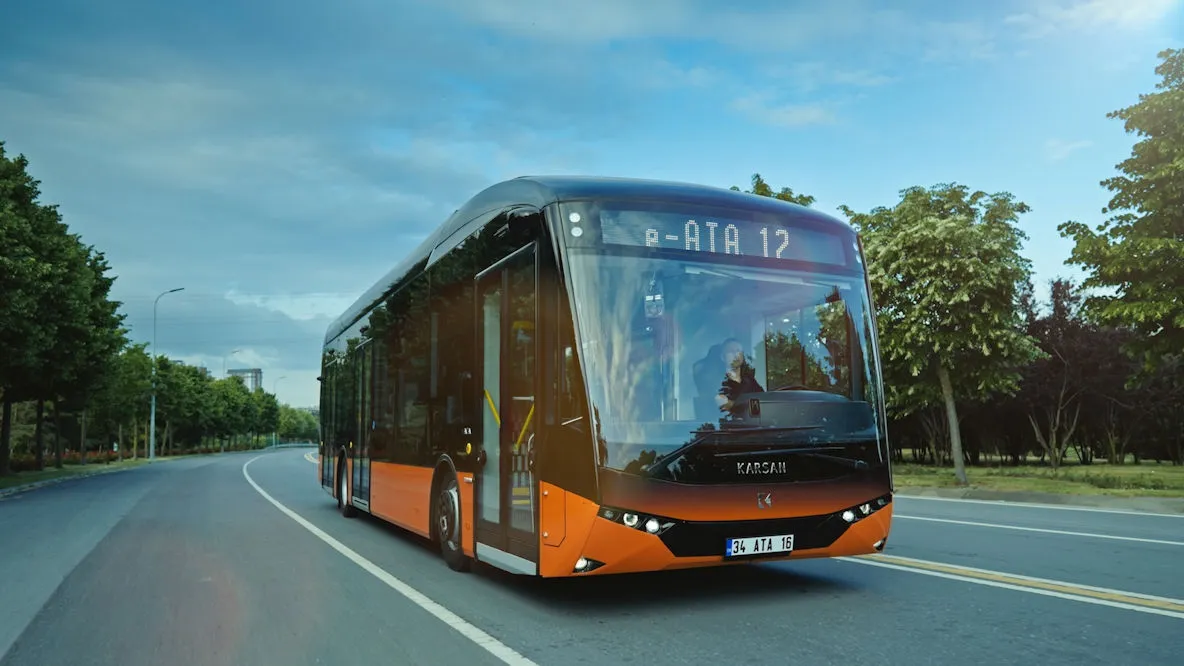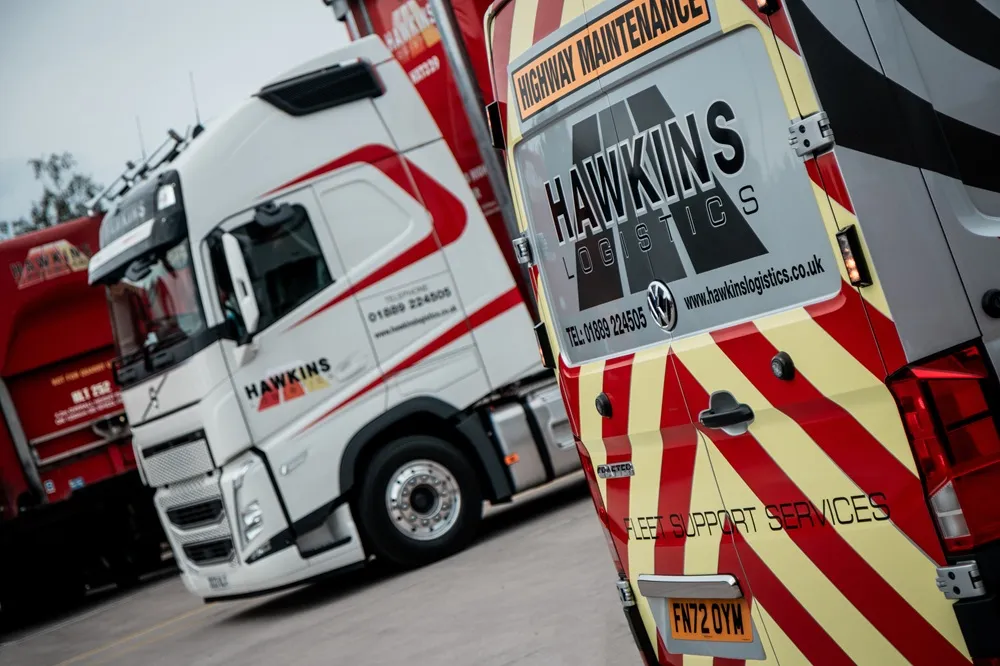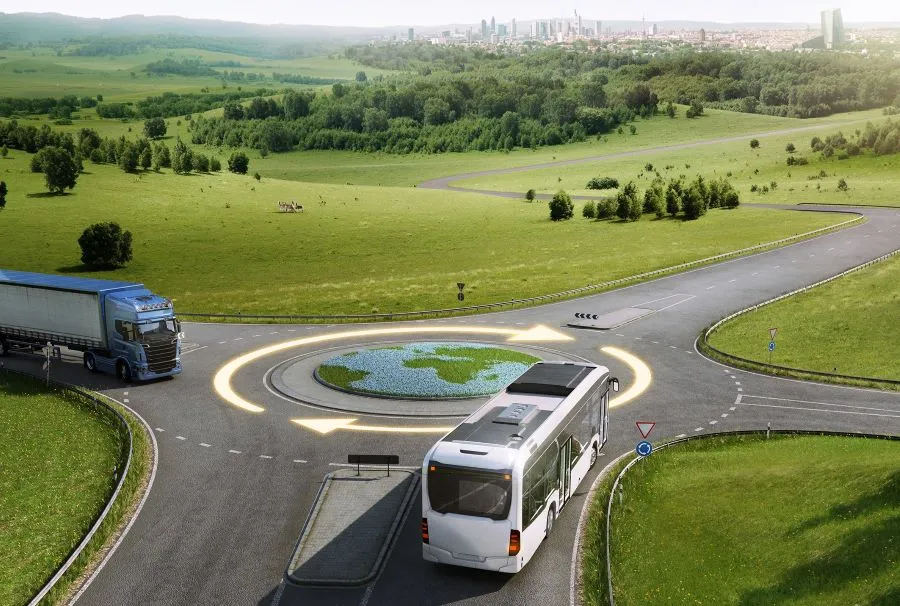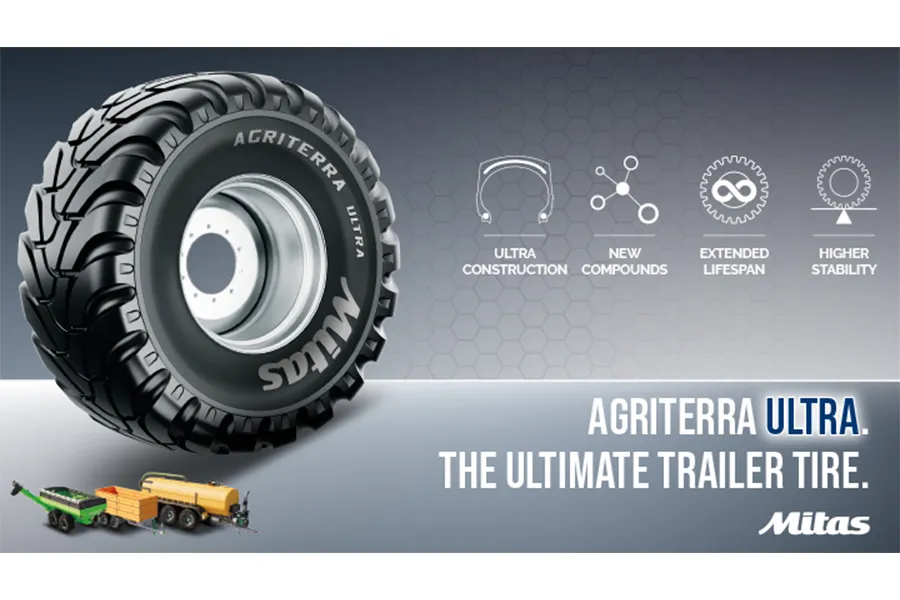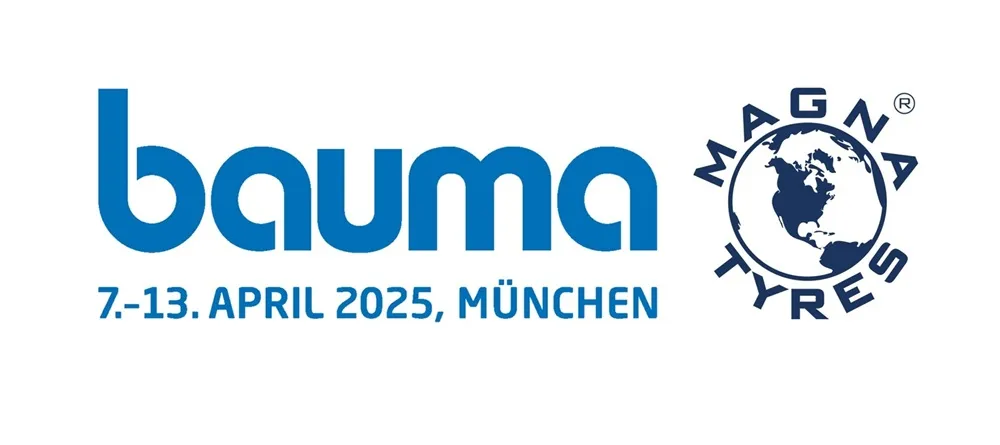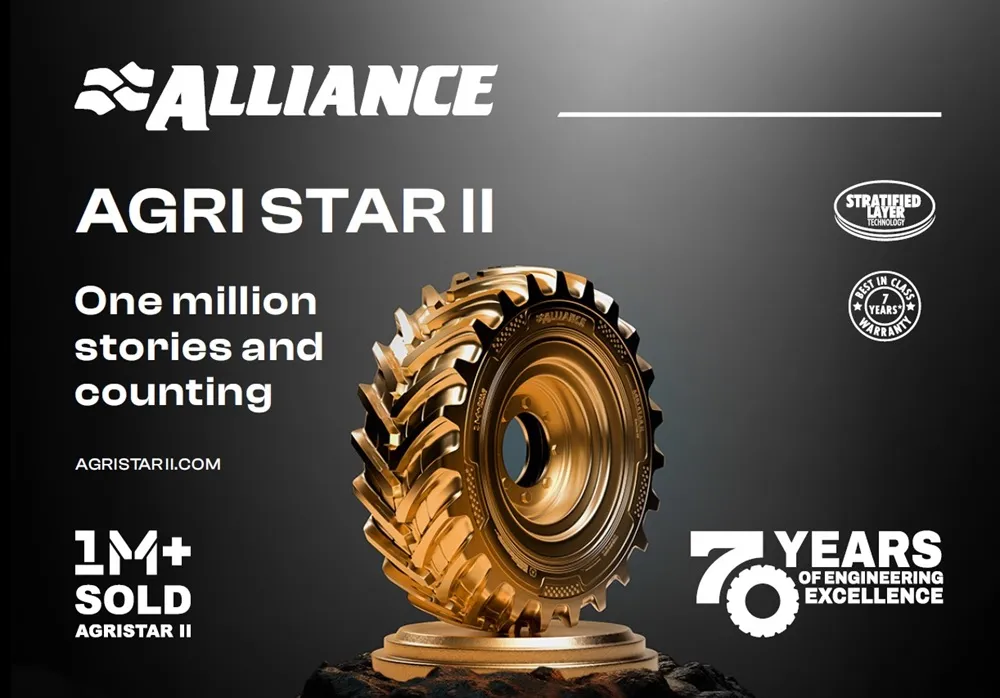As the transport sector strives to reduce its environmental impact, Prometeon Tyre Group is leading the charge with its new C02 coach tyre. Set for release in the second half of 2025, this innovative product achieves an A-class rating for rolling resistance and incorporates 80 per cent recycled and renewable-source materials
Prometeon’s overview of the bus and coach tyre key points

Against this backdrop of sustainability-driven innovation, Gary Lane, Fleet Development Engineer at Prometeon Tyre Group UK, told Commercial Tyre Business how tyre technology is adapting to meet the changing needs of modern passenger transport.
Urban vs long-haul: a tale of two applications
The distinction between urban buses and long-haul coaches creates unique demands for tyre manufacturers. “There are often distinct size differences between tyres used for urban buses and long-haul coaches,” explains Lane. “The most commonly used size in Europe for urban buses is 275/70R22.5, while 295/80R22.5 is typically used for intercity applications.”
This variation isn’t merely about size. Urban environments present specific challenges, particularly regarding passenger accessibility. Floor height is crucial for easy boarding, leading to smaller diameter tyres in city applications. European safety regulations also require buses to position closer to kerbs, resulting in frequent sidewall contact – a factor that demands robust sidewall reinforcement.
The electric revolution
The transition to electric buses is revolutionising tyre design requirements. Modern city buses, with their battery packs and unique torque delivery systems, place unprecedented stresses on tyres. “New developments in tyre technology must also consider the fact that modern city buses are increasingly electric, which places significantly higher stresses on tyres compared to internal combustion engine vehicles,” Lane notes.
Construction and compounding: meeting modern demands
The evolution of bus tyre technology goes beyond mere size considerations. “Tyre specifications for passenger transport vehicles align with the specific demands of the application,” Lane explains. “The structures, including steel belts and carcasses, are reinforced to meet the required load capacity.”
Recent years have seen increasing demand for higher load capacities, particularly on steer axles. This trend is driven by the weight of new electric and hybrid vehicles, which require specially tailored tyre designs. Simultaneously, the push for greater electric vehicle range has spurred development in tyre efficiency.
Optimising performance and costs
For operators, managing tyre performance while controlling costs remains crucial. Lane emphasises the importance of correct tyre pressure: “A 1-bar underinflation can lead to up to 10% loss of efficiency and a 15% reduction in tyre lifespan.”
Modern technology offers solutions through pressure monitoring sensors, available through services like Prometeon’s Super Fleet – a comprehensive service package that provides a wide range of fleet optimisation solutions to ensure the best performance for tyre life, vehicle range and fuel consumption. Additionally, selecting tyres with Class A or B Rolling Resistance ratings can significantly impact fuel consumption.
The sustainability factor
Sustainability plays an increasingly vital role in tyre management strategies. “The use of second-life tyres through retreading is essential for sustainability and reducing CO2 emissions throughout a coach tyre’s lifecycle,” says Lane. “Retreading can reduce CO2 production by up to 70% compared to manufacturing a new tyre.”
The traceability of CO2 emissions and sustainability will become increasingly important parameters for participating in tenders, he suggests. “Moreover, retreading contributes to the operational cost efficiency of passenger transport fleets, improving resource management and reducing maintenance costs.”
Do bus and coach tyres differ from commercial vehicle tyres in everyday use?
In practice, there isn’t a significant difference, believes Lane, as the considerations are largely the same: “Vehicle maintenance, tyre wear checks, and correct inflation pressures are key to ensuring safety and optimising tyre lifespan [for both applications].”
However, when it comes to selecting a manufacturer, products used for passenger transport tend to prioritise reliability and safety, “with manufacturers offering comprehensive service networks that can provide quick assistance when needed”, he adds.
A closer look at Prometeon’s bus and coach tyres
The next-generation coach tyre – the C02
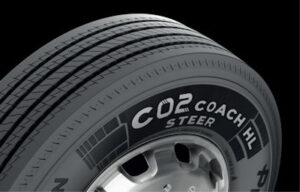
Scheduled to enter the market in the second half of 2025, Prometeon’s C02 tyre has a B-class rating for rolling resistance.
Featuring extremely low rolling resistance with values below 4.0N/kgN, it will help reduce CO2 emissions and operating costs. It boasts a fuel consumption improvement over the previous version of 0.9 litres less per 100 kilometres (source: VECTO), leading to an annual saving of €102,000 (based on a fleet of 50 vehicles, each covering 130,000 kilometres per year), equivalent to 157 tonnes of CO2 saved annually.
Safety is a priority, with an advanced tread pattern providing excellent wet grip and stable handling in all conditions. Low noise levels improve passenger comfort, while innovative materials ensure even wear for a longer lifespan.
Built for modern transport demands, the tyre supports higher load capacities without compromising performance. Key innovations, such as spiral wire technology and a high-resistance belt, enhance durability and retreadability, reducing operating costs over time.
If that’s not impressive enough, the Prometeon C02 is a sustainability leader, made with 80% recycled, certified, or renewable-source materials.
The ‘urban’ bus tyre
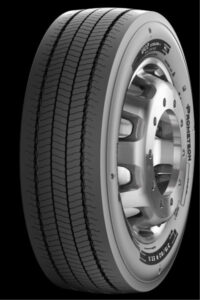
The Prometeon U02 URBAN-e PRO MULTIAXLE tyre is specifically engineered for electric and hybrid buses, offering a perfect blend of sustainability and performance. Its standout feature is an impressive load capacity of up to 8.1 tonnes per axle, making it ideal for heavy electric vehicles.
The tyre excels in urban environments, delivering enhanced comfort and notably quiet operation at just 69dB. Safety isn’t compromised, with excellent grip and handling in all weather conditions, backed by its B-grade wet grip classification and Alpine Symbol certification.
What makes this tyre particularly special is its focus on sustainability, achieving a B-grade for energy efficiency. It also offers improved durability and even wear characteristics, which help reduce its environmental impact while optimising the total cost of ownership for operators. Compared to its predecessor, it delivers improvements across key performance metrics including handling, comfort, and longevity.
Prometeon’s H:01 Coach tyre (which the new C02 tyre will replace later this year) is designed to enhance passenger transport with a focus on safety, efficiency, and comfort. Engineered for medium to long-distance travel, it features low rolling resistance, reducing fuel consumption and CO2 emissions—ideal for modern electric and hybrid coaches.
Safety is a priority, with superior wet grip and 3PMSF certification ensuring reliable performance in all weather conditions. The optimised tread pattern also reduces noise, improving the journey experience for both drivers and passengers.
Durability is another highlight. Innovative design elements, such as rotated shoulder ribs and a dual-layer tread compound, extend tyre life and ensure even wear. Capable of handling increased axle loads, the H:01 Coach is built to meet the demands of next-generation vehicles.

